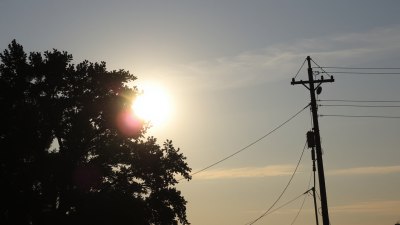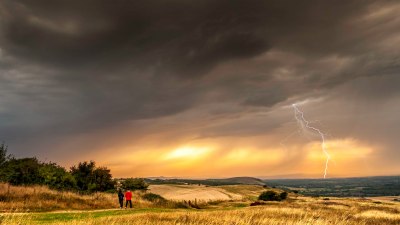Why That Late Afternoon Sun Felt Like the End
Explore the poignant emotions evoked by the late afternoon sun and why its golden light often signals a sense of ending and reflection.

Image created with Flux Schnell
The late afternoon sun carries with it a unique emotional weight, a subtle signal that the day is slowly slipping away. Unlike the harsh brightness of midday or the cool shadows of early morning, this time of day ushers in a softer, more contemplative light. Many people experience a deep, almost instinctual feeling that the late afternoon sun is not just the end of the day but also a metaphorical closing chapter in an unseen story. But why does this particular light feel so final, so imbued with a sense of ending?
To understand this sensation, we need to explore the physical characteristics of the late afternoon sun, the psychological effects of diminishing daylight, and the cultural symbolism woven into our collective consciousness. The sun's trajectory, the lengthening shadows, and the changing colors all contribute to a sensory experience that can stir a profound emotional response.
Physically, the sun during late afternoon sits lower in the sky, casting elongated shadows and bathing the world in a warm, golden hue. This light is softer and less direct than at noon, producing subtle contrasts and a palette dominated by yellows, oranges, and reds. This shift in lighting alters our perception, making familiar objects appear different—more delicate, more transient. The day's illumination is fading, and with it, our time to witness life in full brightness is winding down.
Scientifically, this low-angle sunlight is a result of the Earth's rotation and orbit around the sun. Late afternoon marks a transition period when the sun moves toward the horizon, decreasing the intensity of sunlight. The atmosphere scatters shorter wavelengths of light, giving us that golden glow. This natural phenomenon has endured throughout human history, meaning people have been responding to this light for thousands of years, embedding it deeply into our senses and emotions.
From a psychological standpoint, the dimming daylight impacts mood and cognition. The decrease in sunlight triggers internal cues related to circadian rhythms—the body's natural clock influenced by light exposure. As daylight wanes, the brain begins preparing for rest, releasing hormones that encourage relaxation and introspection. This shift can induce feelings of melancholy or nostalgia, as the day’s activities conclude and the solitude of evening approaches.
Furthermore, evening light subtly signals the passage of time in a tangible way. Each sunset is a reminder that time is finite. That late afternoon sun casting long shadows tells us we are nearing an end—not only of the day but metaphorically of opportunities and moments. This awareness can elicit a poignant mixture of appreciation and loss, as people reflect on what has passed and what is yet to come.
Culturally, the late afternoon sun frequently appears in art, literature, and film as a symbol of closure and transition. Poets often describe this light as “golden” or “honeyed,” evoking warmth and softness that blend with themes of farewell and reminiscence. Painters utilize this time of day to capture fleeting beauty, emphasizing impermanence. The symbolism is nearly universal, transcending geographical boundaries and historical eras.
One reason behind the emotional power of the late afternoon sun is that it coincides with daily rhythms of human activity. After a long day of work or engagement, late afternoon is often a moment of pause or winding down. People might sit quietly, watch the sky change color, or feel the serene calm settle around them. This enforced downtime invites reflection, encouraging individuals to review their day, their achievements, and sometimes their regrets.
Beyond individual reflection, the late afternoon sun also marks seasonal and life transitions. In autumn, for example, the sun’s descent happens earlier, camouflaging days into dusk more quickly. This acceleration reminds us of the cyclical nature of life and death, beginnings and endings. The sun’s golden hour becomes not just a time of visual beauty but a stage for both literal and metaphorical transformation.
Additionally, the warmth of the late afternoon sun itself is paradoxical. Although the sun lowers, its light casts a warming glow that contrasts with the cooling air and the impending twilight darkness. This combination deepens the emotional response. Warmth invokes comfort and safety, while the coming darkness carries uncertainty. Together, they form a bittersweet mixture that resonates deeply within human consciousness.
Empirical studies on light and mood underscore this phenomenon. Research in chronobiology reveals that exposure to natural light patterns affects emotional states. When light diminishes late in the day, some people experience increased anxiety, sadness, or heightened contemplative mood—a response often tied to seasonal affective disorder but also common in everyday experiences. Thus, the late afternoon sun might feel like an end because our minds associate fading daylight with a cessation of activity and a descent into stillness.
In literature, the late afternoon sun frequently parallels themes of mortality and passage. Writers use it to emphasize characters’ transitions or to mark poignant moments of realization. The slow sinking of the sun mirrors the slow closing of chapters in life stories, making the imagery both visually evocative and symbolically rich. The golden hour acts not only as a backdrop but also as a narrative device that deepens emotional impact.
The nature of shadow during late afternoon further enhances this perception. Long, stretching shadows obscure clarity and create a sense of mystery or foreboding. Where contrast once made details sharp at midday, late afternoon diffuses edges, making the world appear less defined and more transient. This visual softening can metaphorically represent uncertainty about the future or acceptance of impermanence.
Socially, the late afternoon can evoke shared memories and communal pauses. Families often gather after work or school during this time, experiencing the day’s end in unison. Collectively, this period encourages slowing down after busy hours, fostering connections and moments of gratitude for the day’s experiences. The environment created by the sinking sun invites conversations about life, loss, and hopes, reinforcing the association between this time of day and endings.
Philosophers might argue that the emotional weight of the late afternoon sun reflects a fundamental human response to time’s passage. Awareness of impermanence is a core aspect of the human condition, and natural phenomena like the setting sun tangibly manifest that awareness. The consistent and predictable retreat of light each day serves as a metaphor for the broader existential truths confronting all people.
In specific locations, the experience of the late afternoon sun may vary, influencing how it's perceived. In northern latitudes during winter, the sun’s low arc is more prolonged and dramatic, intensifying feelings of ending. In contrast, closer to the equator, the sun dips quickly, and evening may arrive abruptly, creating a different emotional rhythm. Despite these variations, the fundamental sense of closure remains.
While the late afternoon sun can feel somber or wistful, it also offers an opportunity for renewal. The end of daylight always precedes darkness, but darkness heralds the eventual sunrise, a new beginning. This cyclical pattern imbues the time with dual significance—both an ending and a promise. Recognizing this duality allows a balanced appreciation of the late afternoon sun’s emotional power.
Artists often capture this balance by highlighting contrasts: the interplay of light and shadow, warm hues against coolness, motion and stillness. Their works evoke both the sorrow of parting daylight and hints of hope that enduring cycles bring. Through color, form, and texture, creations inspired by the late afternoon sun communicate universally felt emotions, transcending language and culture.
Personal anecdotes and memoirs frequently recount moments when the late afternoon sun’s glow triggered revelations or emotional responses. People describe feeling unexpectedly moved by the light, sensing a clarity about life decisions or relationships. These experiences underscore the sun’s ability to influence mood and thought in profound ways, beyond mere physical environment.
In the digital age, the slowed pace of late afternoon may contrast sharply with the fast tempo of modern life. The sun’s descent acts as a natural counterbalance to the often relentless demands of technology and work. It encourages moments of quiet reflection that might otherwise be overlooked, reminding individuals to reconnect with nature’s rhythms and their own inner states.
Ultimately, the feeling that the late afternoon sun signals an end arises from a convergence of natural phenomena, psychological responses, cultural meanings, and personal experiences. It is a complex and layered sensation that resonates deeply within the human psyche. This part of the day stands as a poignant reminder of life’s evanescent beauty and the inevitable passage of time.
By contemplating why the late afternoon sun feels like the end, individuals can deepen their awareness of how environment shapes emotion. It reminds us that the end of one phase often contains the seeds of the next and that light itself holds narratives of life and loss. Embracing this understanding fosters a richer, more nuanced relationship with the cycles that govern our world and our lives.











